Even though it’s far past its warranty, the Hubble Space Telescope is still proving its worth in this new era.
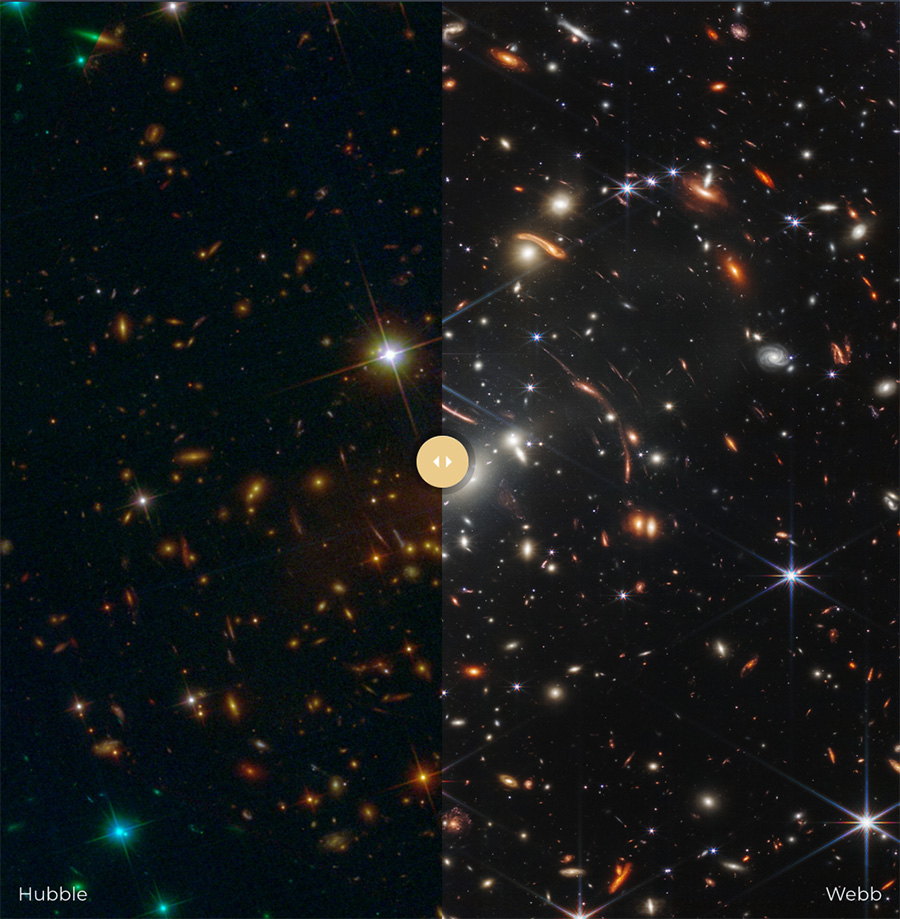
John Christensen / WebbCompare
Perhaps you’ve heard: The James Webb Space Telescope (JWST) is the latest and greatest observatory in space, wowing the astronomical community with amazing images released last week.
But amid all the excitement, the Hubble Space Telescope — NASA’s orbital transformational observatory now for more than 32 years — continues its exploration and discovery.
"We believe that we can keep Hubble doing the ground-breaking science it is known for through the latter part of this decade and possibly into the next," says public affairs officer Claire Andreoli (NASA Goddard).
Hubble: From Trouble to Triumph
Deployed on April 25, 1990, from the cargo bay of the U.S. space shuttle Discovery, Hubble got off to a rocky start: A defective mirror wasn’t discovered until after deployment and calibration. Three years later, astronauts repaired the defect with "corrective lenses," named the Corrective Optics Space Telescope Axial Replacement (COSTAR) package, which they placed in the telescope during the STS-61/Servicing Mission One.
Four servicing missions followed, each one deploying upgrades and new instruments, but the Atlantis STS-125 mission in 2009 would be the last: Hubble is now on its own. Despite some scares, including a brief computer glitch last year, Hubble’s doing just fine.
NASA
“Hubble is still going strong and continues to have an important and unique role to play in cutting edge astronomy research,” says Misty Bentz (Georgia State University) “It also remains popular with astronomy researchers, as the latest call for proposals in March 2022 received five times the number of proposal requests that could be accommodated!”
Hubble's 2022 Highlights
Hubble's observations over the years have helped scientists determine the rate of the universe's expansion, identify moons of Pluto, and shed light on exotic worlds. (See "Celebrating 30 Years" for some of Hubble's most mesmerizing images.)
Even in this year alone, Hubble has broken records while capturing stunning imagery:
- Hubble recently discovered the most distant star known, dubbed Earendel. The images show Earendel as it was 12.9 billion years ago, only 900 million years after the Big Bang.
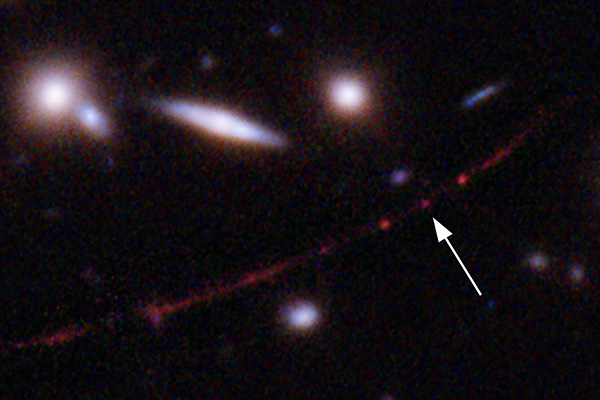
Science: NASA / ESA / Brian Welch (JHU) / Dan Coe (STScI)
- The telescope continues to capture stunning views, such as this deep stare at the globular cluster Terzan 2 in Scorpius:
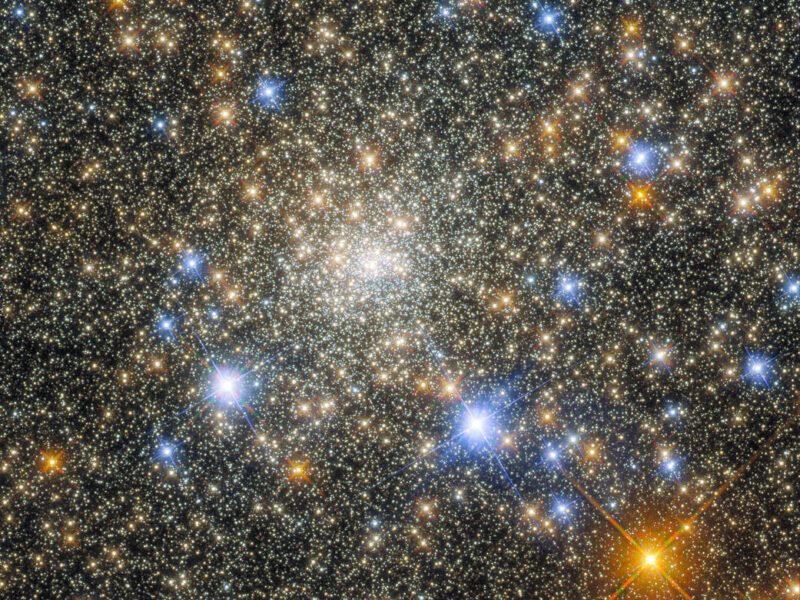
HST / NASA / GFSC / STScI
- Hubble is contributing to a currently underway project called the Ultraviolet Legacy Library of Young Stars as Essential Standards (ULLYSES). This program is using 1,000 orbits of Hubble time, in particular its unique capabilities in the ultraviolet part of the spectrum, to study star formation.
- The mission also recently imaged Comet Bernardinelli-Bernstein (C/2014 UN271), confirming that it's the most massive Oort Cloud comet known. The new observations show that its nucleus is an estimated 137 kilometers (85 miles) across. Comet Bernardinelli-Bernstein will reach perihelion outside the orbit of Saturn in 2031.

HST / NASA / GSFC / STScI
Webb's Complement
Hubble has an important role play in the new JWST era, because even though Webb was often billed as Hubble's successor, the two telescopes are actually quite different.
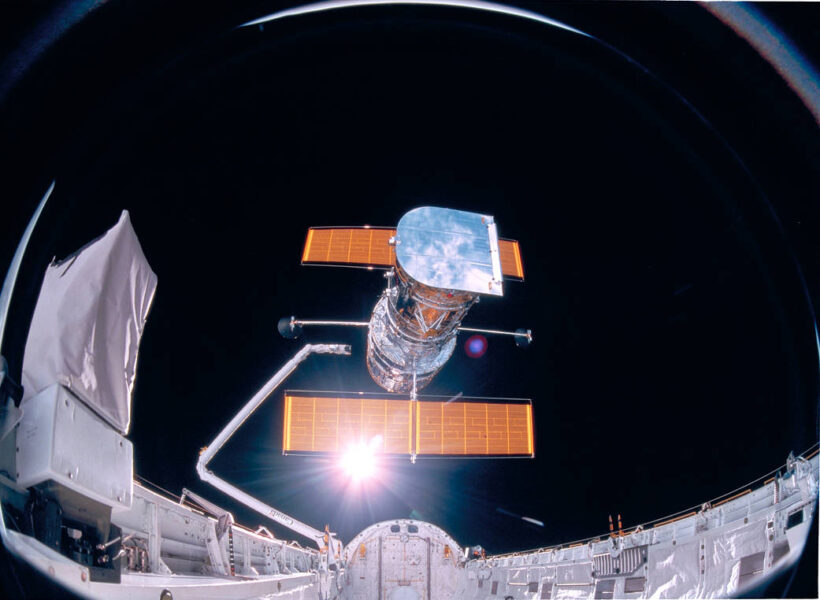
NASA
“Hubble provides high-resolution ultraviolet and visible imaging and spectroscopy, whereas JWST is optimized for the infrared,” Bentz says. “Hubble continues to dominate in studies of nearby stars and galaxies, as well as accreting supermassive black holes.”
In fact, Bentz is leading a new program that uses Hubble to detect Cepheid variables in three galaxies, in order to determine their distances. “Cepheids are most variable at blue wavelengths, where JWST cannot observe,” Bentz explains. “Furthermore, JWST is very slow to move from one target to another, so it is not optimized for returning to the same target again and again, as is needed in study of variable objects like Cepheids.”
There are also plans afoot to utilize Hubble for complementary, simultaneous observations with other observatories, including JWST. Such multiwavelength observations can help gain an understanding that studies in ultraviolet, visible, or infrared alone cannot.
As an example, Bentz points to the neutron star merger that the LIGO and Virgo Collaborations detected in 2017. “Astronomers around the world collected observations at every wavelength possible to learn as much as we could about the physical processes happening during the collision and its messy aftermath,” Bentz says.
Hubble's Fate
In its most recent review of Hubble operations, NASA announced that it would support the observatory through June 2026. In fact, current estimates suggest the observatory can stay in a high-enough orbit for operations to continue until the mid-2030s and beyond; its solar arrays and batteries are also in great shape.
The limiting factor comes down to the gyros that the space telescope uses to turn and lock onto targets. While almost all the observatory's systems are redundant, meaning there's still a back-up available if one piece fails, the gyros are one of the few exceptions. Hubble launched with six, but three have failed.
"The telescope is currently operating with three gyros and no spares," Andreoli says. However, while it takes three gyros to enable efficient operations, observations are still possible, albeit less efficient, with only one gyro.
Engineers have found clever ways to keep missions going well past their warranty: Witness the "warm" mission on Spitzer when its coolant ran out, or Kepler’s extended K2 mission after the second of its four reaction wheels failed. Likewise, after the payload computer gave Hubble problems last summer, team engineers got things back up and running, and they're still working to improve operational processes.
Once the Hubble mission ends, hopefully a long time from now, NASA plans to bring it down in a controlled manner. On the last servicing mission, astronauts installed a Soft Capture Mechanism on the base of Hubble. It could be used by a robotic mission to boost the telescope's orbit, but more likely it will prepare it for a controlled reentry when the time comes.
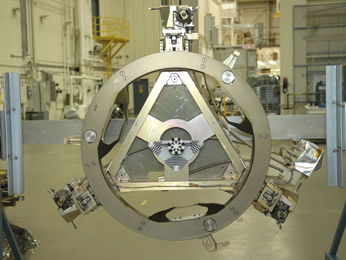
NASA / GSFC
While it's still up there, you might be able to see Hubble in orbit: The telescope is in a 28.5°-inclination orbit, meaning it’s a frequent naked-eye sight for observers at latitudes between 35 °S and 35°N, which includes the southern part of the United States.
An entire generation of astronomers have come of age with Hubble in space, and it remains a vital component in the toolbox of modern astronomers. Expect more great science to come from this venerable space telescope.
 3
3









Comments
dwhightowe
August 4, 2022 at 10:35 am
Please include plate scale, limiting magnitude, and acquisition date for astro images.
You must be logged in to post a comment.
Doug Miller
August 5, 2022 at 5:23 pm
I have read conflicting accounts of the projected lifespan of the Webb. Apparently it takes fuel to maintain its orbital position. One account I read stated the planned lifespan is 5 years, but they are hoping for perhaps 10. Another account projected 25 years. I’m puzzled. Can anyone point to definitive projections of the probable and possible Webb lifespans? Was any provision made in the design for a refueling mission? That is, some way to add fuel if we could send a manned craft way out there some day.
You must be logged in to post a comment.
Davidmw
August 11, 2022 at 5:46 pm
JWST was given enough fuel to guarantee a 5 year mission duration, including all the fuel it would need on it's journey to L2 but when it was launched the rocket put JWST on a much more accurate trajectory than the designers had planned for so JWST used MUCH less fuel than expected and so they now know it has a minimum of 10 years of service life but they are hopefully about it having up to 20 years worth of fuel left, but that will all depend on how careful they are about fuel usage.
There's definitely no chance of it being refuelled. They didn't design for it to be refuelled in space (although it obviously has fuelling ports that were used on the ground) and being a million km's away makes it impossible anyway.....with current tech. I would hope that if we had the tech to send a manned mission out that far into space we would have designed, built and launched much more advanced telescopes
You must be logged in to post a comment.
You must be logged in to post a comment.